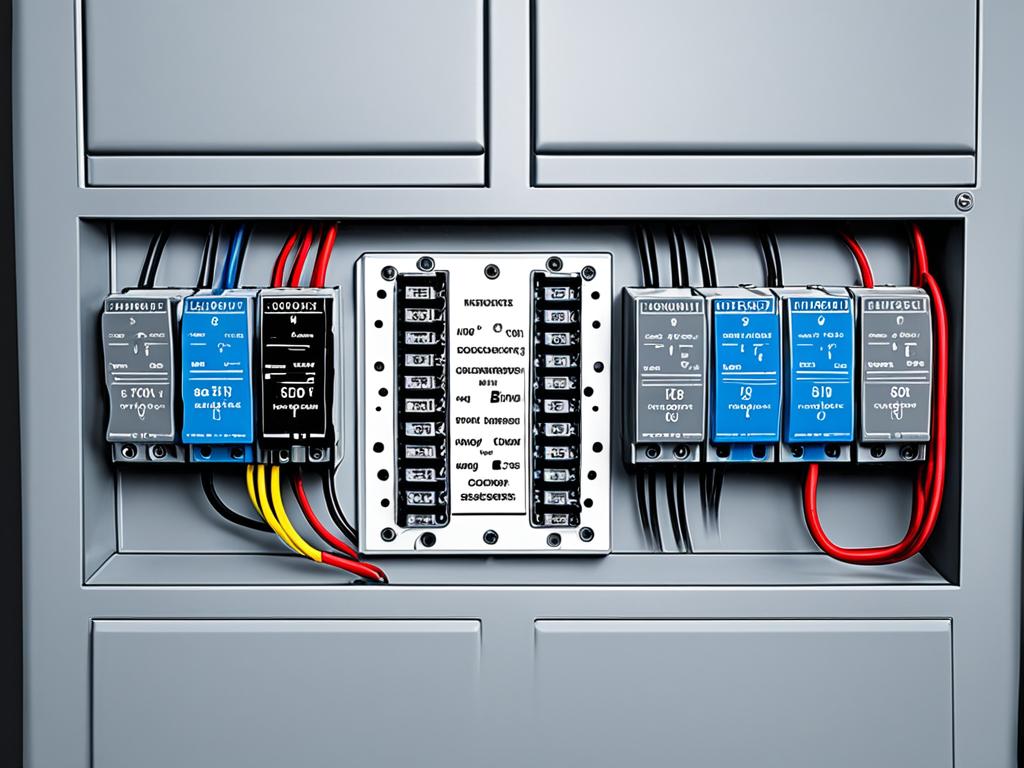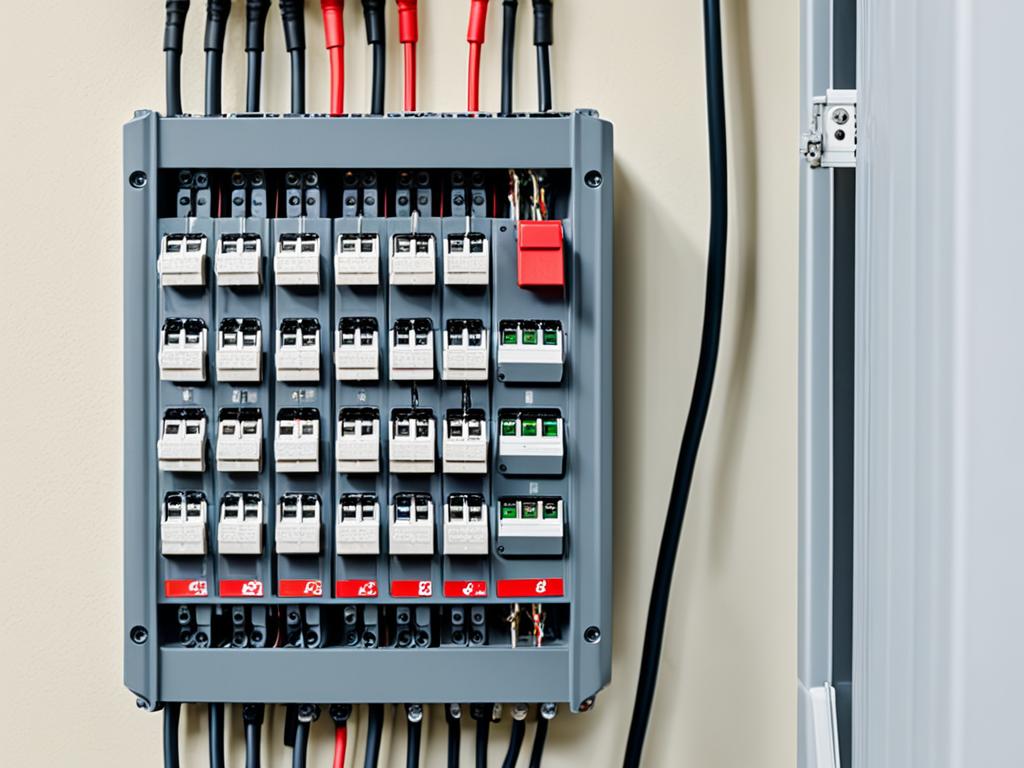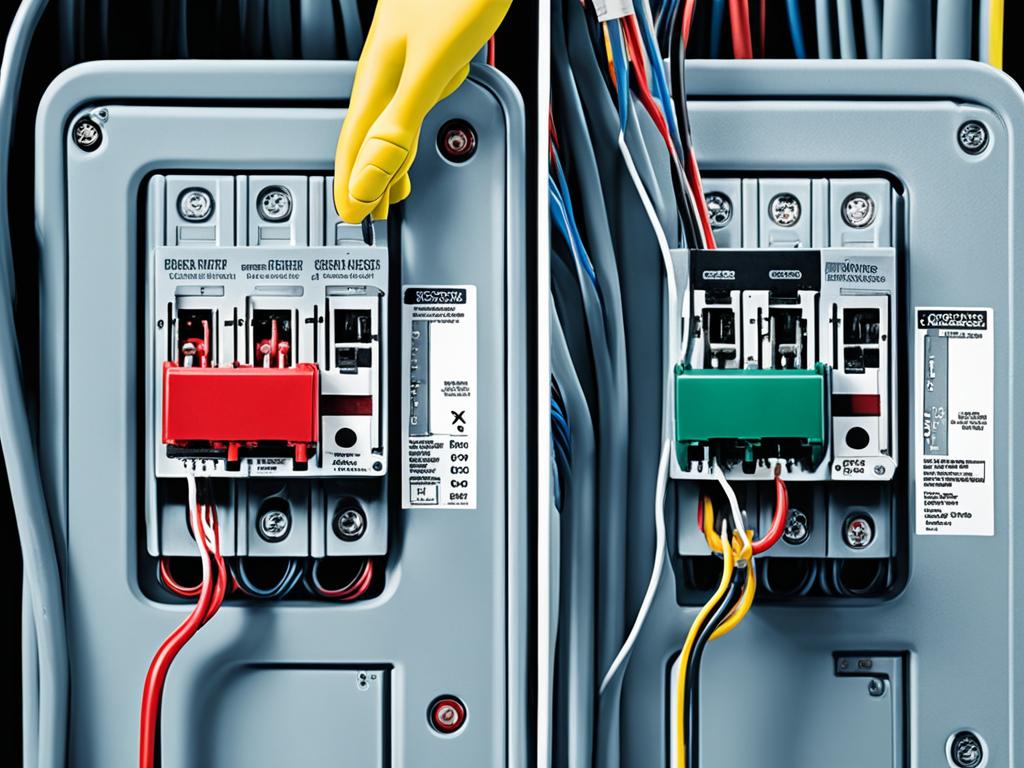An electrical disconnect, also known as a service disconnect, is a crucial component in the electrical system of a home or building. It serves as a switch that isolates all wiring from the source of power, typically the utility power service. Understanding the difference between the main disconnect and service disconnect is essential for ensuring electrical safety and compliance with local building codes.
Key Takeaways:
- The main disconnect is responsible for shutting off power to the entire electrical system.
- The service disconnect isolates the power supply from the utility.
- The main disconnect is located in the main service panel.
- The service disconnect is usually found outside the building.
- Both disconnects should be installed and maintained by professionals for optimal safety.
Understanding Main Disconnects
In any home or building, the main disconnect plays a crucial role in the electrical system. It is responsible for shutting off power to the entire system, providing safety and convenience when needed. Let’s take a closer look at the main disconnect and explore its location, function, and significance.
The Location of the Main Disconnect
The main disconnect can be found in the main service panel of a home or building. This panel is usually located in a central area, such as a utility room or basement. It is here that all the electrical circuits and wiring in the building are connected, making it the hub of the electrical system.
Within the main service panel, the main disconnect is easily identifiable. It is typically a large breaker switch that can be manually operated. The main disconnect serves as the gateway to the entire electrical system, allowing you to control the flow of electricity to your home or building.
The Function of the Main Disconnect
When the main disconnect is switched off, it interrupts the power supply to all the circuits and electrical devices connected to the system. This is particularly important during emergencies, electrical maintenance, or repairs. By shutting off the main disconnect, you can safely work on or inspect the electrical system without the risk of electrical shocks or accidents.
Furthermore, the main disconnect serves as a protective device. In the event of an electrical overload, short circuit, or other hazardous situations, the main disconnect can quickly cut off power, preventing further damage to the electrical system and reducing the risk of fire or electrical accidents.
The Significance of Proper Disconnect Wiring
Proper wiring of the main disconnect is essential for the overall functionality and safety of the electrical system. The main disconnect is connected to the utility’s power supply through the electrical meter. It is crucial to ensure that the wiring is correctly installed and meets the required standards and codes.
By adhering to proper disconnect wiring practices, you can ensure the integrity of the electrical system and minimize the risk of electrical hazards. Enclosing the main disconnect in a secure and accessible panel also enhances the safety and ease of maintenance.
Summary:
The main disconnect is a crucial component of any electrical system. Located in the main service panel, it allows for easy and quick shutdown of the entire system. Proper wiring and placement of the main disconnect ensure safety, convenience, and compliance with electrical codes.

| Main Disconnect Location | Function | Proper Wiring |
|---|---|---|
| In the main service panel | Shuts off power to entire system | Ensures safety and compliance |
Exploring Service Disconnects
The service disconnect is a crucial component in electrical systems, responsible for isolating the power supply from the utility. It plays a vital role in ensuring the safety and functionality of the electrical infrastructure. Let’s delve deeper into service disconnects and understand their key features.
The service disconnect panel houses the service disconnect and is typically located outside the building. It can be a separate enclosure with a disconnect switch or the main circuit breaker in the main service panel. This strategic placement allows for convenient access and control over the power supply.

Service disconnects are directly connected to the utility’s feeder lines, which deliver electrical power to the building. These lines carry the full voltage and current from the utility, making it essential to adhere to proper wiring techniques and requirements. By following these guidelines, you ensure optimal performance and prevent potential hazards.
To ensure a safe and compliant installation, it is crucial to have the service disconnect panel wired and connected by a licensed electrician or a qualified professional. These experts possess the necessary knowledge and expertise to handle the intricacies of electrical systems, ensuring seamless integration and compliance with local building codes.
Now that we’ve explored service disconnects and their significance, let’s move on to the next section, where we’ll summarize the key differences between main disconnects and service disconnects.
Conclusion
In conclusion, understanding the differences between the main disconnect and service disconnect is crucial for enhancing electrical safety in your home or business.
The main disconnect, which is located in the main service panel, is responsible for shutting off power to the entire electrical system. It acts as a safeguard, allowing easy and quick shutdowns during emergencies or maintenance. On the other hand, the service disconnect specifically isolates the power supply from the utility and is usually found outside the building. It ensures that the power supply is cut off from the utility, providing an extra layer of protection.
Both the main disconnect and service disconnect serve important roles in protecting the electrical system. It is essential to have them installed and maintained by professionals to ensure proper functioning and compliance with electrical codes. By adhering to these safety measures, you can significantly enhance the safety and reliability of your electrical system.
FAQ
What is an electrical disconnect?
What is the difference between a main disconnect and a service disconnect?
Where is the main disconnect located?
What is the purpose of the main disconnect?
Where is the service disconnect located?
What is the role of the service disconnect?
Are there any requirements for installing the main disconnect?
Can anyone install the service disconnect panel?
How can understanding the main disconnect and service disconnect enhance electrical safety?
Source Links
- https://www.thespruce.com/how-to-wire-an-electrical-disconnect-1152743
- https://www.jadelearning.com/blog/2020-nec-service-disconnects/
- https://c03.apogee.net/mvc/home/hes/land/el?utilityname=duquesnelight&spc=foe&id=4517
